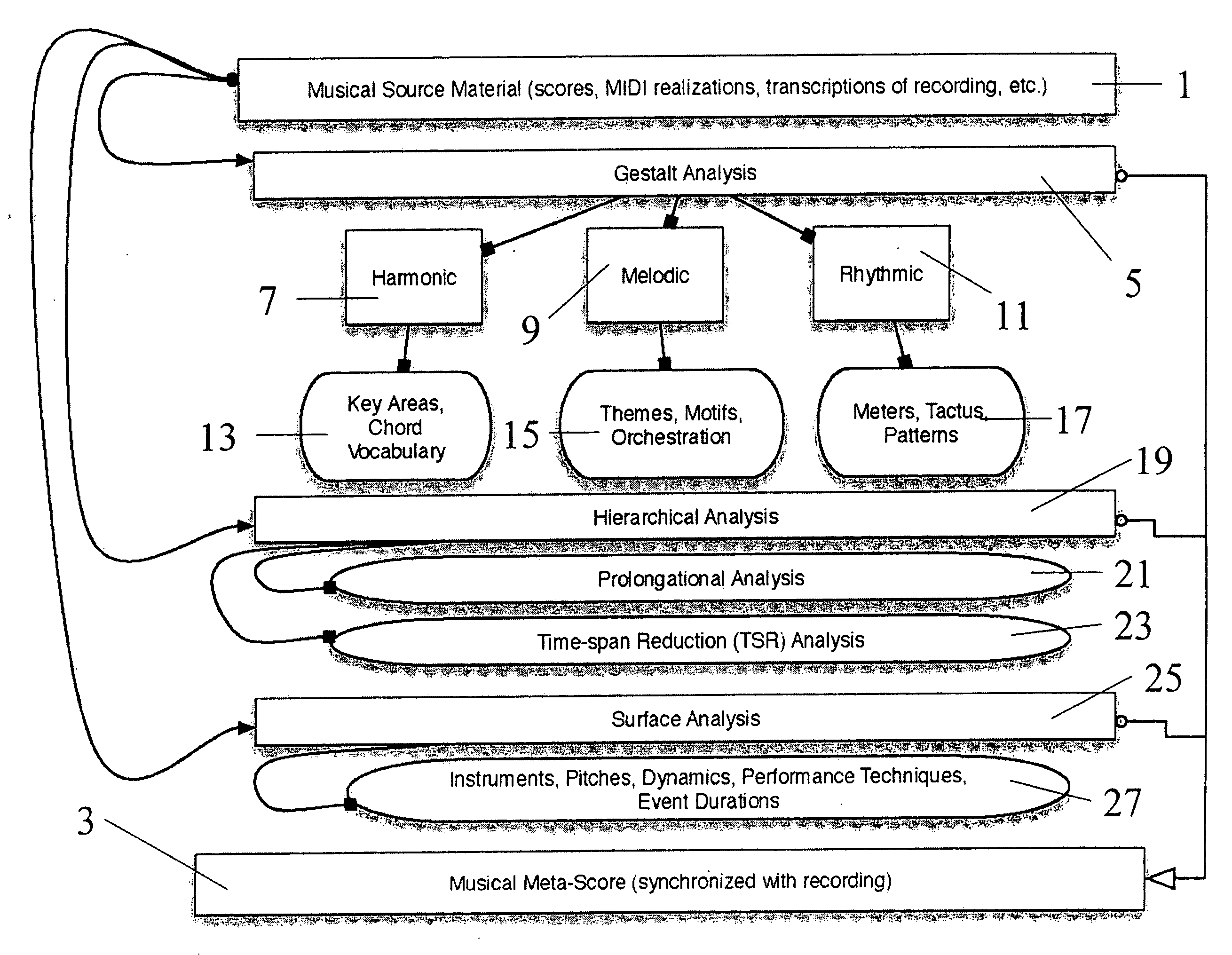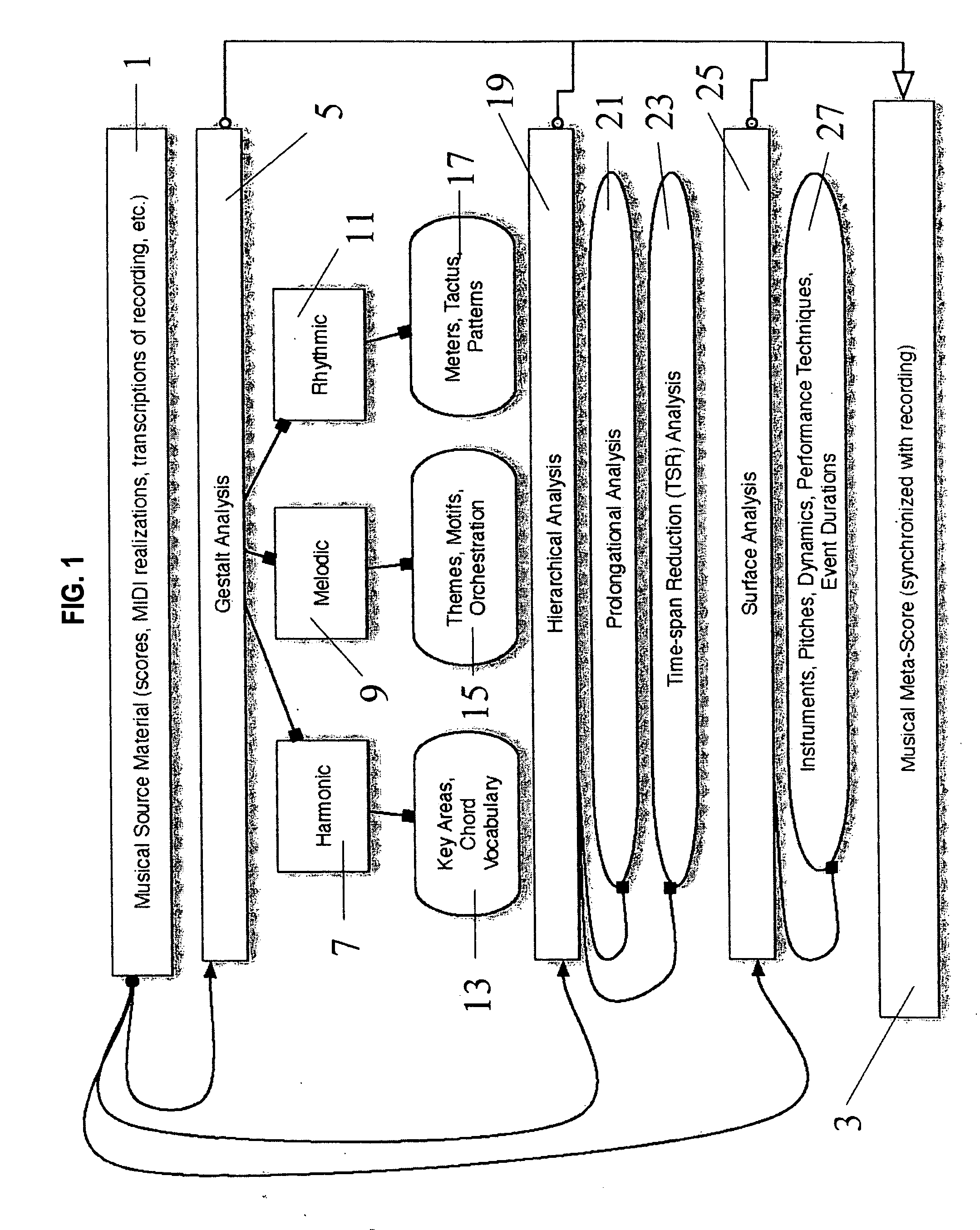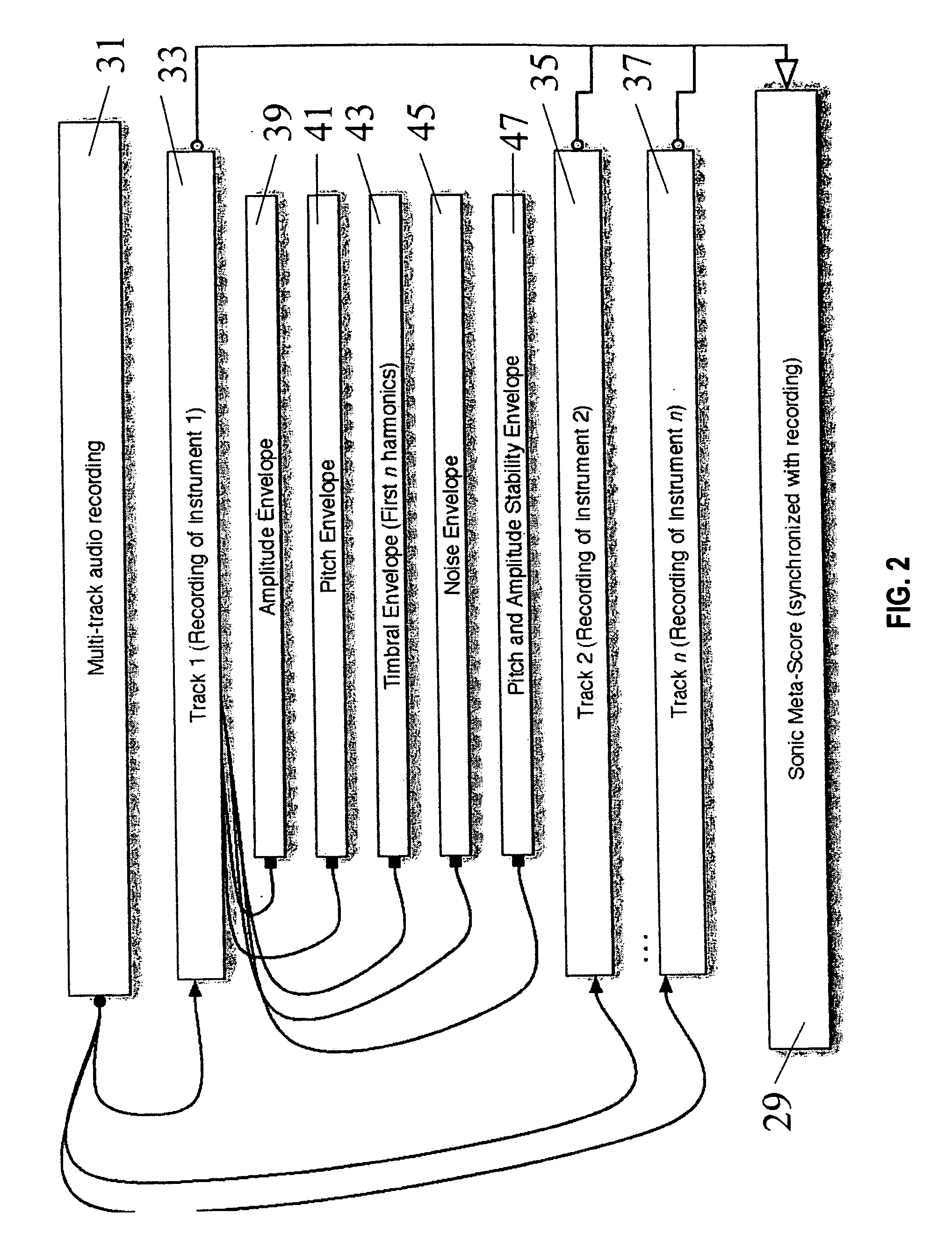Interactive tool and appertaining method for creating a graphical music display
- Summary
- Abstract
- Description
- Claims
- Application Information
AI Technical Summary
Benefits of technology
Problems solved by technology
Method used
Image
Examples
implementation embodiment
Maxcode Implementation Embodiment
[0060]An explicit code implementation according to an embodiment of the invention in MaxCode is presented in Appendix B. Max is a visual programming language developed and maintained by San Francisco-based software company Cycling'74 (www.cycling74.com). It has its origins in a program called “patcher” written by Miller Puckette at IRCAM / Paris in 1987. A complete description of the Max language can be found in the Max Reference Manual by Chris Dobrian and David Zicarelli, Cycling '74 (2000-2005).
[0061]The textual representations of the program (#X, #P, etc.) are difficult to interpret in raw form, and the only practical way to understand a Max program is to look at the visual function graph (FIGS. 5 and 6); his is what differentiates Max from a procedural programming language (C or Java); the visual layout of the program defines its function.
Visualization System and Display
[0062]FIGS. 4A-4M illustrate exemplary types of visual outputs 55 that can be ...
PUM
 Login to View More
Login to View More Abstract
Description
Claims
Application Information
 Login to View More
Login to View More - R&D
- Intellectual Property
- Life Sciences
- Materials
- Tech Scout
- Unparalleled Data Quality
- Higher Quality Content
- 60% Fewer Hallucinations
Browse by: Latest US Patents, China's latest patents, Technical Efficacy Thesaurus, Application Domain, Technology Topic, Popular Technical Reports.
© 2025 PatSnap. All rights reserved.Legal|Privacy policy|Modern Slavery Act Transparency Statement|Sitemap|About US| Contact US: help@patsnap.com



